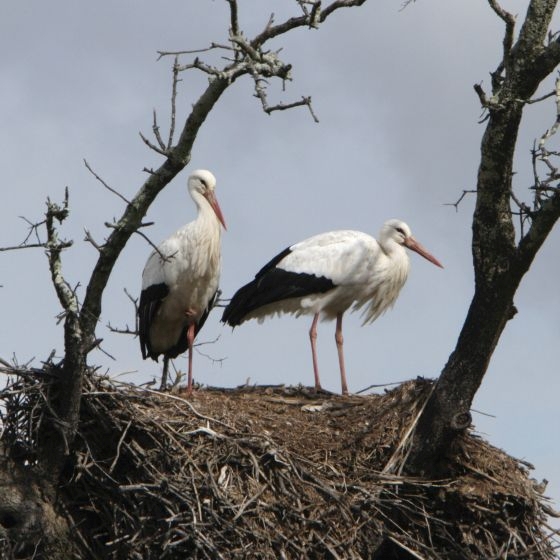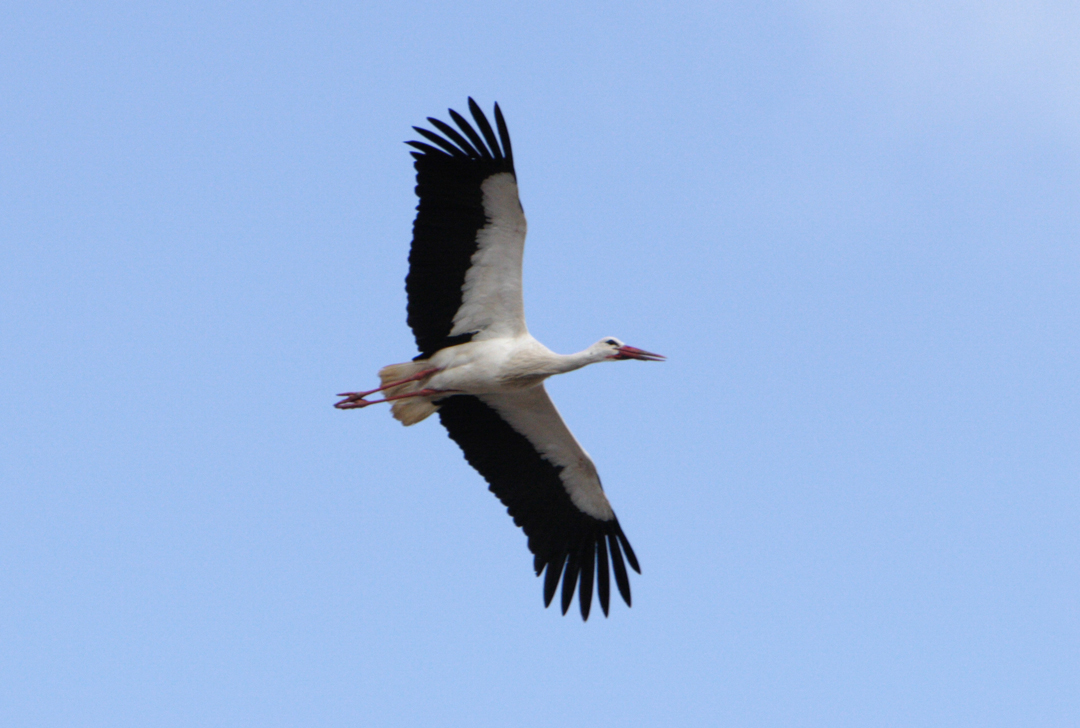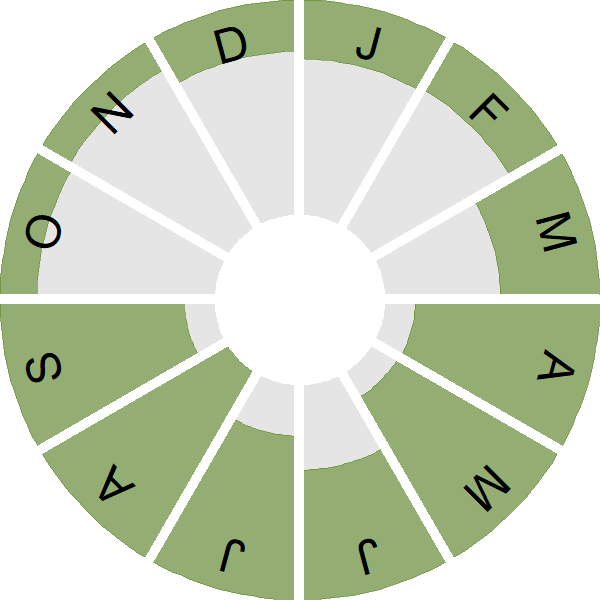White Stork

Introduction
Very much a breeding bird of southern Europe, this red-billed, black and white stork has a small breeding population in southern England, the result of a reintroduction attempt.
The only documented record of a pair of White Storks breeding in Britain is from Scotland in 1416, when a pair was reported to have nested on St. Giles Cathedral in Edinburgh. A small but successful reintroduction programme in East Sussex is responsible for recent breeding attempts.
White Stork populations in southern Europe used to be wholly migratory but a partnership study involving BTO has shown that some White Storks in Portugal are now remain resident throughout the year, a change in behaviour made possible by the availability of feeding opportunities at landfill sites.

Key Stats
Identification
Songs and Calls
Call:
Status and Trends
Conservation Status
Population Size
Population Change
The last record of wild White Storks breeding in the UK dates to 1416, when a pair bred on St Giles Cathedral in Edinburgh [Mayall et al. 2023]. Since the 1960s, they have been recorded in small, but increasing, numbers as scarce migrants, some of which have been considered to be of wild origin, while others are likely to have been released or be birds that have escaped from collections or from reintroduction projects, making it difficult to accurately assess their numbers [White & Kehoe 2018]. A White Stork reintroduction project began at Knepp, Sussex in 2016, with individuals released every year since; wild nesting occured for the first time in 2020 when two pairs bred [Chapman & Groves 2021]; the species is now classified as a reintroduced breeder [Eaton & the Rare Breeding Birds Panel 2024].
Distribution
White Storks are scarce migrants with a scattering of records, mostly in southern Britain. A current reintroduction program in southeast England is leading to increasing numbers of records and the provenance of individual records is increasingly hard to determine.
Occupied 10-km squares in UK
or view it on Bird Atlas Mapstore.
or view it on Bird Atlas Mapstore.
European Distribution Map
Distribution Change
We do not currently have a distribution change for this scarce migrant.
Change in occupied 10-km squares in the UK
Seasonality
White Storks are rare and encountered sporadically throughout the year. Expect this picture to change with the movements of reintroduced birds.
Weekly pattern of occurrence
The graph shows when the species is present in the UK, with taller bars indicating a higher likelihood of encountering the species in appropriate regions and habitats.

Movement
Britain & Ireland movement
Foreign locations of birds ringed or recovered in Britain & Ireland
Dots show the foreign destinations of birds ringed in Britain & Ireland, and the origins of birds ringed overseas that were subsequently recaptured, resighted or found dead in Britain & Ireland. Dot colours indicate the time of year that the species was present at the location.
- Winter (Nov-Feb)
- Spring (Mar-Apr)
- Summer (May-Jul)
- Autumn (Aug-Oct)

European movements
EuroBirdPortal uses birdwatcher's records, such as those logged in BirdTrack to map the flows of birds as they arrive and depart Europe. See maps for this species here.
The Eurasian-African Migration Atlas shows movements of individual birds ringed or recovered in Europe. See maps for this species here.
Biology
Survival and Longevity
Survival is shown as the proportion of birds surviving from one year to the next and is derived from bird ringing data. It can also be used to estimate how long birds typically live.
View number ringed each year in the Online Ringing Report.
Classification, names and codes
Classification and Codes
- Order: Ciconiiformes
- Family: Ciconiidae
- Scientific name: Ciconia ciconia
- Authority: Linnaeus, 1758
- BTO 2-letter code: OR
- BTO 5-letter code: WHIST
- Euring code number: 1340
Alternate species names
- Catalan: cigonya blanca
- Czech: cáp bílý
- Danish: Hvid Stork
- Dutch: Ooievaar
- Estonian: valge-toonekurg
- Finnish: kattohaikara
- French: Cigogne blanche
- Gaelic: Corra-bhàn
- German: Weißstorch
- Hungarian: fehér gólya
- Icelandic: Hvítstorkur
- Irish: Storc Bán
- Italian: Cicogna bianca
- Latvian: baltais starkis, svetelis
- Lithuanian: baltasis gandras
- Norwegian: Stork
- Polish: bocian bialy
- Portuguese: cegonha-branca
- Slovak: bocian biely
- Slovenian: bela štorklja
- Spanish: Cigüeña blanca
- Swedish: vit stork
- Welsh: Ciconia Gwyn
Research
Publications (2)
Timing is critical: consequences of asynchronous migration for the performance and destination of a long-distance migrant
Author: Acácio, M., Catry, I., Soriano‑Redondo, A., Silva, J.P., Atkinson, P.W. & Franco, A.M.A.
Published: 2022
There is growing evidence that climate change is shifting the timing of migration for migrant birds, but we have surprisingly little information on what these changes mean for them. The timing and duration of a migratory flight is likely to determine the environmental conditions that an individual will encounter on its journey, and this may have important consequences. It may encounter unfavourable weather conditions or discover that a traditional stopover site doesn’t hold the expected resources, because the bird has arrived too early or too late.
20.06.22
Papers

Are white storks addicted to junk food? Impacts of landfill use on the movement and behaviour of resident white storks (Ciconia ciconia) from a partially migratory population
Author: Gilbert, N.I., Correia, R.A., Silva, J.P., Pacheco,C., Catry, I., Atkinson,P.W., Gill, J.A. & Franco, A.M.A.
Published: 2016
16.03.16
Papers

